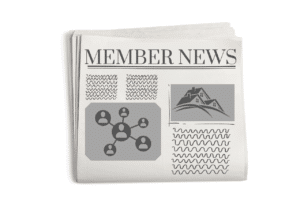More than half of the nation’s households are now headed by someone at least 50 years of age. These 65 million older households are highly diverse in their living situations, financial resources, health and functional abilities, and life stages, and thus require different types of housing to meet their needs and preferences. Affordable, accessible housing located in age-friendly communities and linked to health supports is in particularly short supply. Demand for these units will only increase when the baby boomers start to turn 80 in less than a decade. And whether they own or rent, millions of older households struggle to pay for their housing and other basic necessities, and their numbers are rising. Households now in their 50s to mid-60s are especially at risk of having insufficient resources to manage rising healthcare and housing costs in their later years.
- Many older Americans are burdened by housing costs: Nearly a third of households age 65 or older (9.7 million) pay at least 30 percent of their income for housing, and more than half of these pay over 50 percent. [INTERACTIVE MAP]
- There is a large wealth gap between older homeowners and renters: Median homeowners aged 50–64 had a net worth of $292,000 in 2016—almost 60 times that of the same-age median renter. The difference in wealth between owners age 65 and over and same-age renters is nearly as large.
- While median incomes rose in the last five years for older adults, gains were uneven. From 2011-2016, median incomes rose 9.6 percent for those 65-79 and 5.2 percent for those 80 and over, while those 50-64 saw an increase of only 2.6 percent.
- There is an historically high gap in homeownership rates for older whites and blacks: 81 percent of white households age 50 and over own their homes compared to only 57 percent of older black households. This 24-percentage point gap is the largest disparity since recordkeeping began in 1976.
- Growing numbers of older adults live in low-density areas:Between 2000 and 2016, the share of older adults living in low-density tracts in 95 of the 100 largest US metros rose from 24 to 32 percent, an increase of almost 6 million adults. Providing services and transportation alternatives is more difficult in locations with more dispersed housing. [INTERACTIVE MAP]
- There aren’t enough accessible units to serve the growing number of those with physical challenges: In 2016, 17 percent of households age 50 and over included someone who had difficulty climbing stairs or walking (including 43 percent of those age 80 and over). However, according to the most recent estimates available, only 3.5 percent of US homes had three key features for those with mobility challenges: single-floor living, no-step entries, and extra-wide halls and doors.
- Many of the most vulnerable live alone: The share of households 80 and over that are single-person reaches 57 percent. Among renters of the same age, 77 percent live alone. Single-person households in need of support or care must rely on non-resident or paid caregivers, yet also have lower incomes than larger households.


